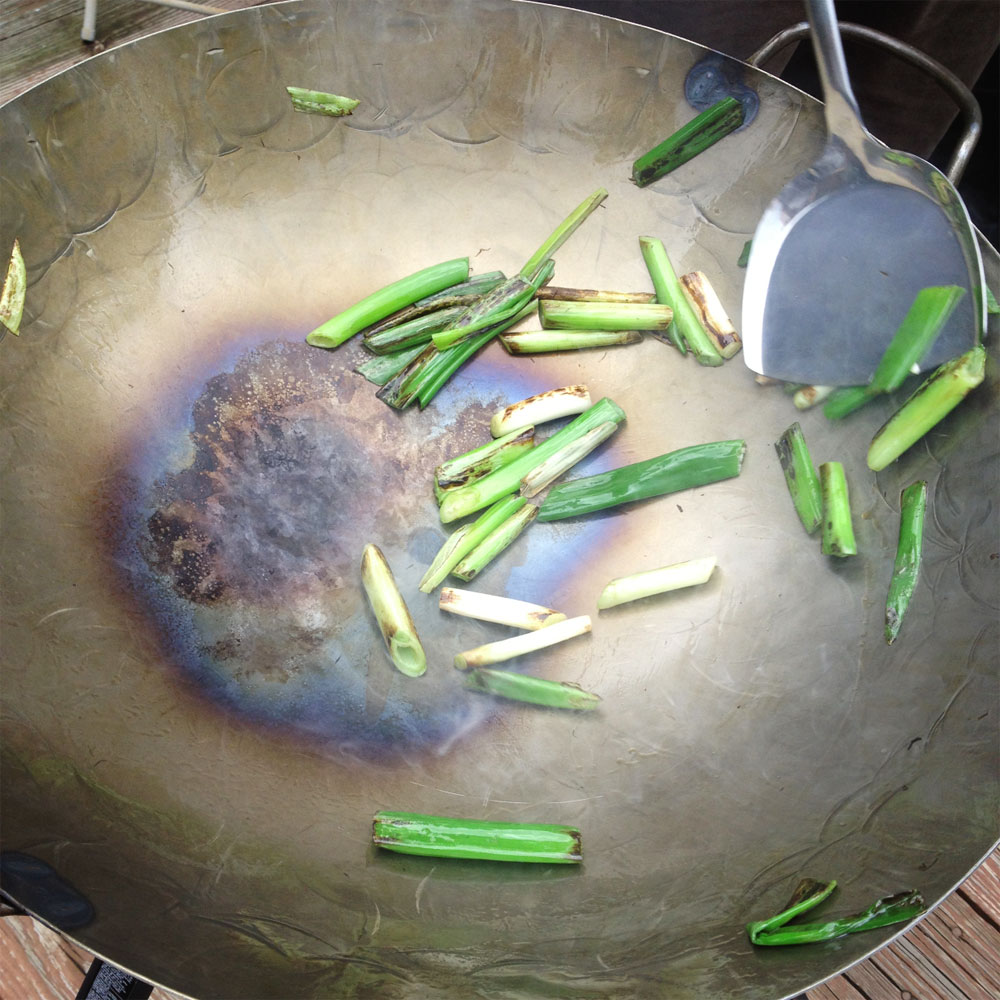When you bring your new wok home from the store, it' nothing more than a hunk of metal. Without seasoning it, it is worthless. Think of a cast iron pan - if you know how to maintain cast iron you know how to care for a wok. Once clean, heating and cooling your wok with cooking oil will develop a natural non stick coating over time requiring less oil to cook and opening up a host of ancient cooking methods to you. Your new wok will come covered in oil to protect it from rust between the factory and your kitchen. Without properly seasoning it, your wok will rust. So the first step is to remove the protective coating. The easiest and simplest way is with hot soapy water and steel wool. This will be the first, last and only time that you’ll ever want to use soap or steel wool on your wok. Scrub it with the soap and water until you remove all visible traces of the oil. You won’t get all of it – it’s impossible – but no worries, it will come off later. Once you rinsed the wok dry it thoroughly.
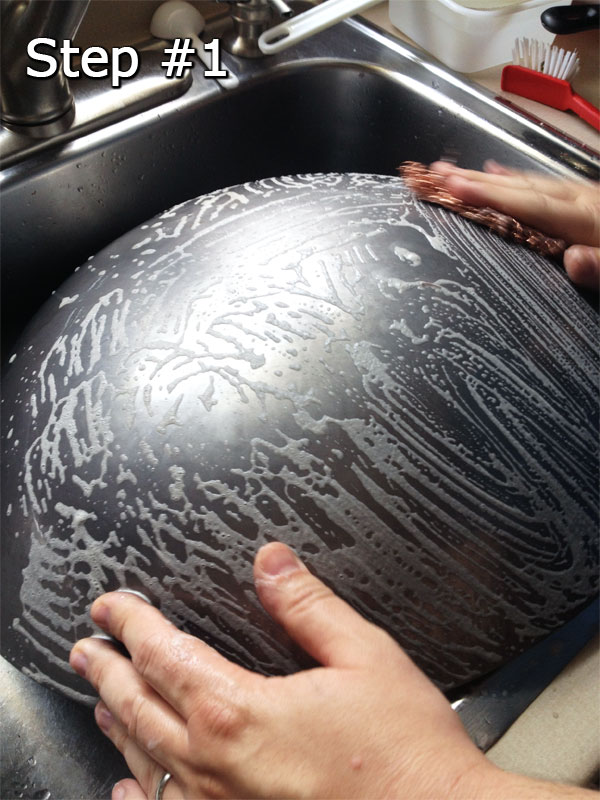
Next heat your oven to 425. In the meantime, we want to put a very thin coat of oil on the wok – inside and out. What kind of oil? The possibilities are endless, but choose something that can stand up to the heat – so no butter or olive oil. Peanut or canola oil are good choices as is lard (but only choose lard from grass fed animals). I chose to use organic vegetable shortening this time.
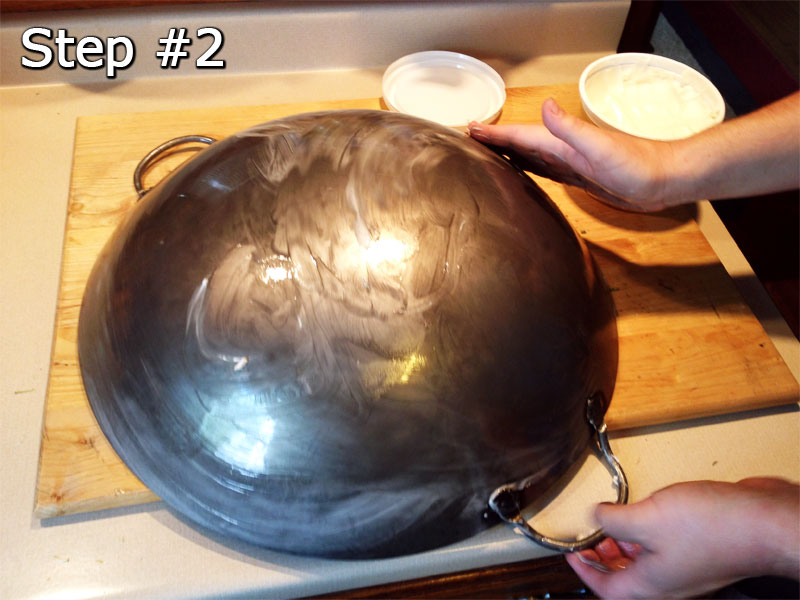
Once you cover the wok with oil, wipe off any excess and put it upside down in the oven for 20 minutes. My wok didn’t have wooden handles, but if yours does, see if it’s removable. If not, wrap the handle with a damp rag and cover it all with foil. After the time is up, open the oven door and let the wok cool for a bit.
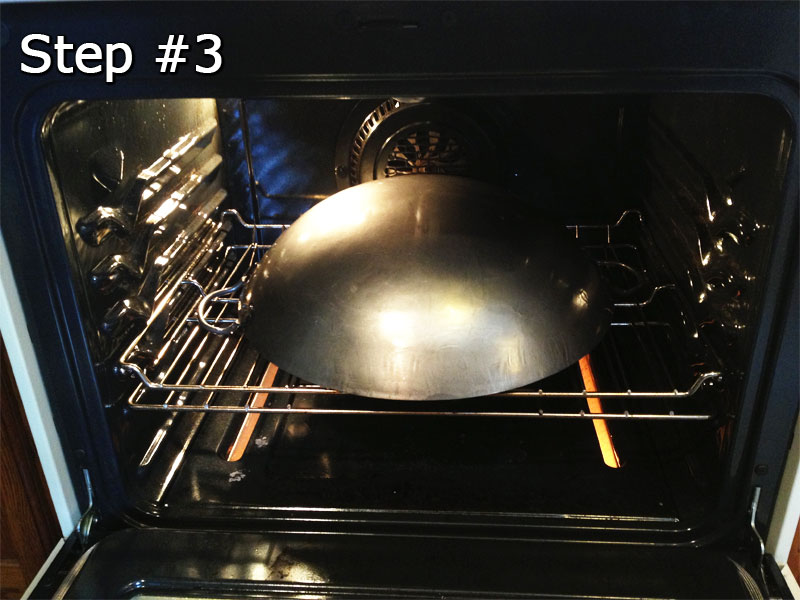
Then we’ll put it on the stove and heat it up. Add 2 tablespoons of cooking oil and stir-fry some aromatics until charred. Make sure to push everything around the pan rubbing it on every part of the surface. This will help remove any metallic taste from the wok. What to use for aromatics? I used a bunch of green onions, but Chinese chives, ginger, garlic, or onions make great choices.
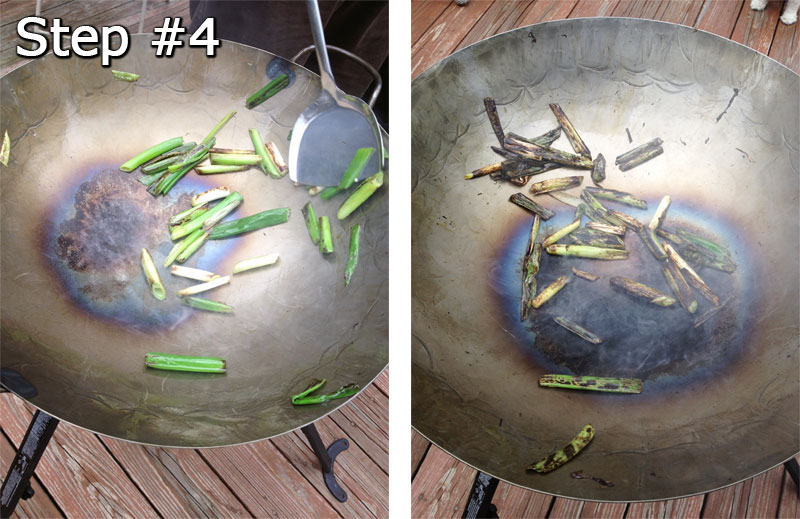 Once the aromatics are charred, remove them from the pan, give it a wipe and you’re good to go. To maintain your wok, rinse with water after each use but no soap. You can use a soft sponge to get off any stuck pieces. Make sure to dry over heat and coat with a thin layer of oil when necessary. Your wok will develop a seasoned look to it with time and gets better every time you use it.
Once the aromatics are charred, remove them from the pan, give it a wipe and you’re good to go. To maintain your wok, rinse with water after each use but no soap. You can use a soft sponge to get off any stuck pieces. Make sure to dry over heat and coat with a thin layer of oil when necessary. Your wok will develop a seasoned look to it with time and gets better every time you use it.
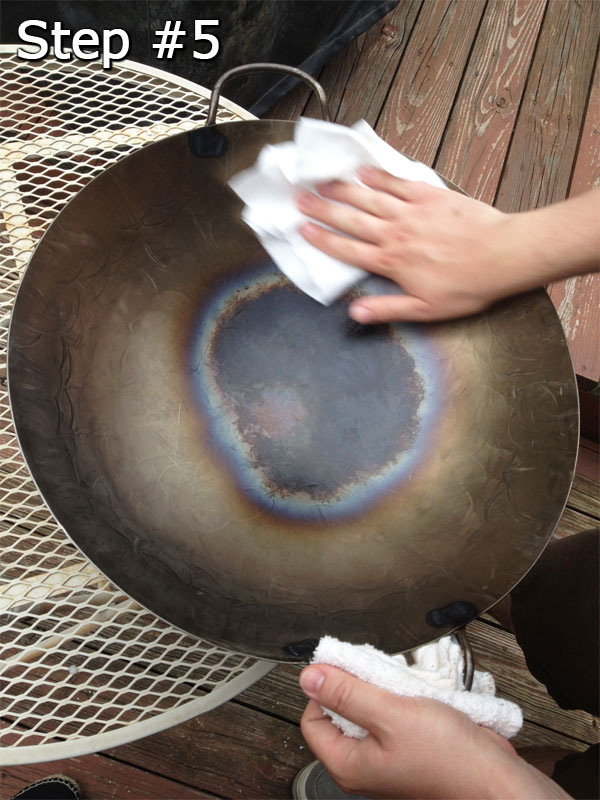
If you want more information on woks – history, use, care, lore, etc. – I highly recommend The Breath of a Wok by Grace Young.

